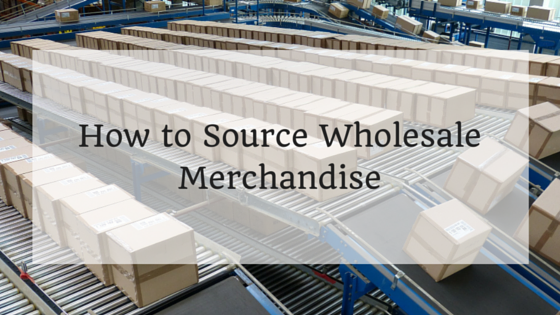Selling wholesale merchandise online is one of the easiest ways that anybody can build a real business operated from home. You can generate a good amount of cash through buying merchandise at a low price, and then re-selling it on reputable websites such as Amazon or eBay.
If you are planning to develop and build a serious income from your online selling, you will need to identify sources for your products that are not only reliable but also renewable. This is the only way to ensure that you have a stable and constant stream of goods. To put it differently, you must ensure that you are sourcing your merchandise from genuine suppliers. When you work with reliable wholesale suppliers, it also means that you will be getting your products at wholesale prices and, therefore, get the best profit margins.
However, similar to any business venture, there are pros and cons to wholesale sourcing:
Pros
- Often, it is possible to start out with a relatively small product order, even in the range of $100.
- It is easy to re-order those items that are selling well.
- You can profitably develop a good business relationship with suppliers and then get exclusive rights to sell their products on Amazon
Cons
- You may not always obtain the highest profit returns from online wholesale products.
- It requires a good measure of detective work to locate good wholesale sources.
- Some distributors or wholesalers may not agree to sell their products to Amazon sellers.
- The level of competition can also become as high or as stiff as found in retail arbitrage.
Things to consider when thinking of selling on Amazon
- Site organization
- Seller Fees
- Shoppers are not all the same
- The Amazon Seller Community
Tips on Product Sourcing Strategy
The secret that lies behind making great money from selling online is getting your products at prices that are low. Generally, you have much to gain and minimal to lose when selling merchandise on Amazon. Successful sellers make lots of money through buying from reliable suppliers at wholesale prices, and subsequently selling the same products online at retail prices.
Employ a Model that has worked for others
Carefully study what other successful Amazon or eBay sellers are doing—not just the products that they are dealing in. For example, where do they source their products from and how? Do they put multiple products (or product parts) together? Are they adding value in some other way? The bottom line is to study what you could successfully borrow and implement in your own venture.
Never Stop Product Sourcing
Any experienced businessperson would advise you that the most opportune time to think of getting new stock lines is when everything is doing marvelously, and your sales are riding high. It could prove a huge business blunder to wait until when things begin turning sluggish to start looking for your next option.
Today, online retail is fast moving and very competitive. Successful sellers know that the trick lies in not standing still. All the time, they are looking for new products and suppliers, and for innovative methods of inventory sourcing. Never follow the herd when it comes to sourcing for your online merchandise.
Start your Selling with Solid Marketplace Research
It’s very tempting for any online seller to begin sourcing for merchandise by looking at what they can buy—what the suppliers are offering. However, that is only half the issue. A product that seemingly looks great might actually fail to move at all when it comes to your own choice of marketplace—an item may not be the ideal product for the kind of buyers who visit your site.
The key thing to do is to first carry out your own market research before making any moves. You wouldn’t want to be left with huge stocks that are not being bought.
Great! But how do you do market research? Let’s find out!
1. You need to identify your target audience
Having a thorough understanding of your target audience will help you answer questions, such as ‘’Who is your product meant to serve?’’, ‘’What do they need and how can you connect with them?’’, etc. By doing this not only will you determine who you’re going to sell your products to, but how you’re also going to sell.
Beside checking out online reports and data, creating buyer personas by answering these simple questions could be another great way for identifying your audience:
• How old are they?
• Where are they located?
• What’s their gender?
• What’s their income status?
• What’s their relationship status?
• Do they have an education degree?
• What’s their job title?
• What are their interested in?
• What are their goals?
• Etc.
2. Know your competitors
An essential part of your market research is the competitor research…not only because it helps you identify who else is doing something similar, but you can also see what they offer, what their value proposition is, how they their product, and for what price they offer it, etc.
By having such kind of information, you’ll be able to define the price you can charge for your product/service, what marketing campaign would be more successful for your business, what initiatives will make you stand out from your competitors.
3. Summarize the data
After collecting your data, make sure you organize and analyze it so you can make the best use of it.
Get Close to your Product Source
The well-known concept of economies of scale teaches us that when you deal with larger quantities, costs are reduced as fixed expenses like staffing and warehousing are spread out more. For both manufacturers and the suppliers, normally it is cheaper for them when they sell you larger product quantities than smaller quantities. In the process, as a seller, you also benefit from the savings that they pass on to you.
The closer you are to your product source, the easier it gets when it comes to buying larger quantities and reaping the benefits of scale. Looking for manufacturers or suppliers closer to home could help you in uncovering some great sources. However, experts also advise that it doesn’t always pay to think in terms of “cheap” when it comes to Chinese products.
Bottom Line
When things are working out great, it’s not very appealing for most business people to think about how everything could go wrong. However, the fact is that every day, businesses fail, even when sales are looking very healthy and upbeat. Just keep locating alternative merchandise suppliers, and keeping in touch provides you with some level of assurance or security in case the worst happens to the source currently supplying your needs.
Successful eCommerce retailers know that they must not limit themselves to just a single method of product sourcing. Through taking advantage of several different methods, you will create a comprehensive and solid sourcing strategy that will allow you to find the best business deals and thus maximize your profits every single time.








